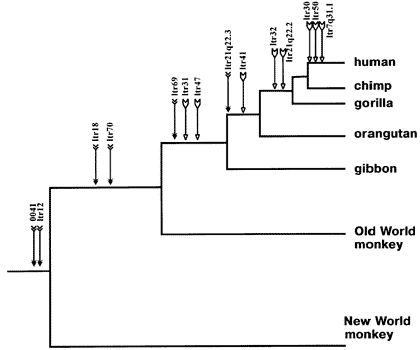
So shouldn't we see more junk DNA code in all older species?
If the code really is completely unused, and the genetics are rapidly changing, you might expect it to get lost in the shuffle, yes. But DNA that isn't out-and-out harmful is hard to get rid of, and there's always some new "junk DNA" to take the place of the old stuff. Junk DNA just doesn't put a high enough cost on the cell for it to be selected out quickly. At least, that's one possible explanation. I haven't studied it, so I couldn't tell you for sure.
There are more ways for junk DNA to get into a cell than for it to be lost. For instance, some viruses will pick up other bacterial DNA instead of virus DNA by accident before leaving a host cell; when they attach to some other cell, instead of infecting it with viral DNA, they add in part of the DNA from the cell they just left. There's all sorts of crazy ways for bacteria to pick up junk DNA (or useful DNA).

So shouldn't we see more junk DNA code in all older species?
Another example: The human genome permanently contains roughly *20,000* (not a typo) different sections of "fossilized viruses" (known technically as ERVs, or Endogenous RetroViruses). These are relics of failed viral infections which took place in our long-ago ancestors and then passed down to us in our DNA.
Retroviruses are a class of viruses which reproduce themselves by actually inserting their own DNA "inline" into the genomic DNA of the infected host. Normally the viral reproduction cycle then kills the cell so infected, but at times a virus will "fumble" the insertion and just leave a "broken" copy of itself permanently stuck in the host's DNA. If this happens to occur in a cell in the host's germ line (like a sperm or egg cell, or the cells which produce sperm/eggs), then the inactive virus "stuck" in the DNA will be *inherited* by the resulting offspring and be found in the DNA of *all* of his/her cells. And then subsequently passed along to each subsequent generation ad infinitum.
Here's the really fun part: lots of the ERVs in our DNA were not originally contracted by one of our human ancestors, but by one of our PRE-HUMAN ancestors. How do we know this? Because the exact same ERVs (same basepair sequence, same "fragmenting", exact *same* basepair insertion point) are found in various *non-human* genomes, indicating that both lineages inherited that specific ERV from a COMMON ANCESTOR, before the evolutionary split which eventually resulted in humans and the other species.
Here, for example, is the "map" of some of the ERVs found in humans which are also found in various other groupings of primates:

(Each labeled arrow on the chart shows an ERV shared in common by all the branches to the right, and *not* the branches that are "left-and-down". This is the pattern that common descent would make. And common descent is the *only* plausible explanation for it. Furthermore, similar findings tie together larger mammal groups into successively larger "superfamilies" of creatures all descended from even earlier common ancestors.)
Notice how the pattern of "shared nesting" based on shared ERVs *alone* just "happens" to look exactly like the branching ancestry pattern which evolutionary biology arrived at by other lines of evidence... What a "mere coincidence", eh?